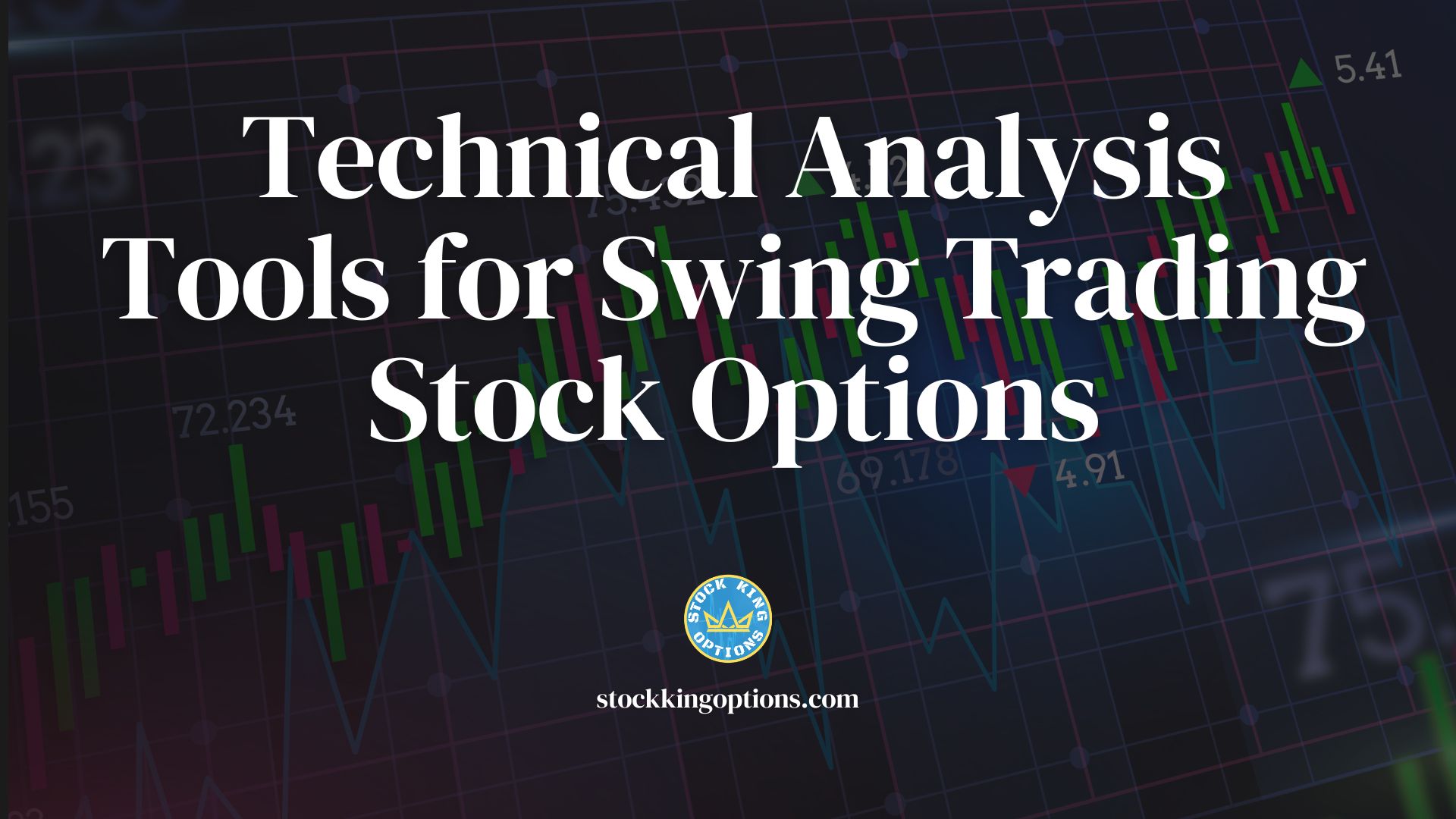
Key Takeaways:
– Technical analysis tools are indispensable for effective swing trading stock options.
– Utilizing these tools enhances decision-making and improves trading outcomes.
– Understanding technical analysis tools is essential for navigating volatile markets.
Featured Snippet:
Question: Why are technical analysis tools important for swing trading options?
Answer: Technical analysis tools are crucial for swing trading stock options as they aid in informed decision-making and contribute to improved trading outcomes.
Introduction:
In the world of swing trading stock options, mastering technical analysis tools is paramount. This article explores the significance of these tools and their pivotal role in guiding strategic decisions. From identifying entry and exit points to analyzing market trends, understanding technical analysis tools such as Moving Averages, RSI, and Bollinger Bands is fundamental for success in swing trading stock options.
Moving Averages
Moving averages are one of the most commonly used technical analysis tools in swing trading stock options. They are a type of trend-following indicator that helps traders identify the overall direction of a stock’s price movement. Moving averages smooth out short-term fluctuations in price data and provide a clearer view of the long-term trend.
To understand how moving averages work, it is important to first understand what they actually represent. A moving average is simply an average of a specific number of previous price points, typically closing prices. For example, a 50-day moving average is calculated by adding up the closing prices for the past 50 days and then dividing by 50. This process is repeated daily to create a constantly updated line on the chart.
The most common types of moving averages used in swing trading are simple moving average (SMA) and exponential moving average (EMA). The SMA gives equal weightage to all data points, whereas EMA gives more weightage to recent prices. This means that EMAs react faster to changes in prices compared to SMAs, making them more suitable for short-term trading strategies.
So why do traders use moving averages? One main reason is to identify trends and reversals in stock prices. When the price crosses above or below a moving average, it can signal a change in trend or momentum. For example, if the current stock price crosses above its 200-day SMA, this could indicate an uptrend and vice versa for crossing below.
In addition to identifying trends, traders also use multiple moving averages together as confirmation signals. For instance, when shorter-term EMAs cross over longer-term SMAs from below, it can signal potential buying opportunities as it indicates an increasing momentum in upward direction.
Another way traders utilize moving averages is through support and resistance levels. In an uptrend, the rising MA acts as support and helps prevent sharp corrections by providing buying pressure at that level. Similarly, during downtrends, moving averages act as resistance levels by providing selling pressure at that level.
Moving averages can also be used to determine potential entry and exit points. As the stock price moves closer to the MA line, it may offer a buying or selling opportunity depending on the direction of the trend and other supporting indicators.
Moving averages are a versatile tool for swing traders as they help identify trends and reversals, provide confirmation signals, and act as support/resistance levels. However, like any technical indicator, they should not be relied upon solely and should always be used in conjunction with other analysis tools for better accuracy.
Relative Strength Index (RSI)
Relative Strength Index (RSI) is a popular technical analysis tool used by traders to identify potential buying or selling opportunities in the stock market. It was developed by J. Welles Wilder Jr. and introduced in his book, “New Concepts in Technical Trading Systems”, in 1978.
The RSI is a momentum oscillator that measures the speed and change of price movements. It compares the average gains and losses over a specified period of time, usually 14 days, and displays it on a scale of 0-100. The RSI value is considered overbought when it goes above 70 and oversold when it drops below 30. This means that if the RSI exceeds the upper threshold of 70, it indicates that the stock may be overvalued and could experience a pullback soon. Conversely, an RSI reading below 30 suggests that the stock may be undervalued and could potentially rebound.
One of the main advantages of using RSI is its ability to help traders spot divergences between price movements and indicator readings. A bullish divergence occurs when prices are making lower lows while RSI is making higher lows, indicating underlying strength in buying pressure. On the other hand, a bearish divergence happens when prices are making higher highs while RSI is forming lower highs, signaling weakening buying pressure.
In addition to identifying overbought or oversold conditions and spotting divergences, traders can also use RSI to generate buy or sell signals through crossovers with its signal line at either level 70 or 30 respectively. When RSI crosses above its signal line at level 30, it suggests a potential uptrend reversal, giving traders a buy signal. Conversely, when RSI crosses below its signal line at level 70, it indicates a possible downtrend reversal, triggering a sell signal.
Another key feature of RSI is its ability to adapt to different market conditions. During volatile markets with large price swings, the RSI period can be shortened to capture shorter-term trends, while a longer period is better suited for smoother markets.
However, like any other technical indicator, RSI is not foolproof and should always be used in conjunction with other indicators and analysis methods. It is also important to consider market fundamentals and news events that could influence stock prices.
The Relative Strength Index is a versatile tool that provides valuable insights for swing trading stock options. By understanding how RSI works and incorporating it into your trading strategy, you can increase your chances of making profitable trades.
Bollinger Bands
Bollinger Bands are a popular technical analysis tool used by swing traders to track stock price movements. Developed by John Bollinger in the 1980s, this tool is based on the concept of moving averages and standard deviation.
Bollinger Bands consist of three lines: the middle band, upper band, and lower band. The middle band is a simple moving average (SMA) of the stock’s price over a set period, usually 20 days. The upper and lower bands are calculated by adding and subtracting two standard deviations from the middle band, respectively.
The key idea behind Bollinger Bands is that they dynamically adjust to market volatility. When prices are volatile, the bands widen, and when prices are stable, the bands contract. This characteristic makes them an ideal tool for identifying potential entry and exit points for trades.
One way to use Bollinger Bands is through observing price action when it reaches either the upper or lower band. If prices touch or breach the upper band, it may indicate that the stock is overbought and due for a pullback towards the middle band. On the other hand, if prices touch or cross below the lower band, it may signal an oversold condition and an opportunity for buying at a discounted price.
Another popular strategy using Bollinger Bands is known as “the squeeze.” Traders watch for periods where market volatility has decreased significantly leading to narrower bands (i.e., contracting). Such periods often precede significant price movements as tighter bands suggest that buyers and sellers have reached an equilibrium point and one side will likely dominate soon.
When analyzing charts with Bollinger Bands, traders must also pay attention to patterns such as breakouts or reversals occurring near these bands’ levels. For example, if a stock breaks out above its upper Bollinger Band with increased volume, it may be signaling a strong uptrend ahead.
It’s important to note that Bollinger Bands are not absolute indicators, and traders must use them in conjunction with other analysis tools and techniques to make informed trading decisions. Traders should also experiment with different settings for the bands, such as using a shorter or longer-period SMA or standard deviation to find what works best for their trading style.
Bollinger Bands are a powerful technical analysis tool used by swing traders to identify potential entry and exit points for trades. By understanding how they adjust to market volatility and spotting patterns near these bands’ levels, traders can gain valuable insights into stock price movements. However, as with any other technical indicator, Bollinger Bands are not foolproof and should be used in combination with other tools for more reliable trading signals analysis.




